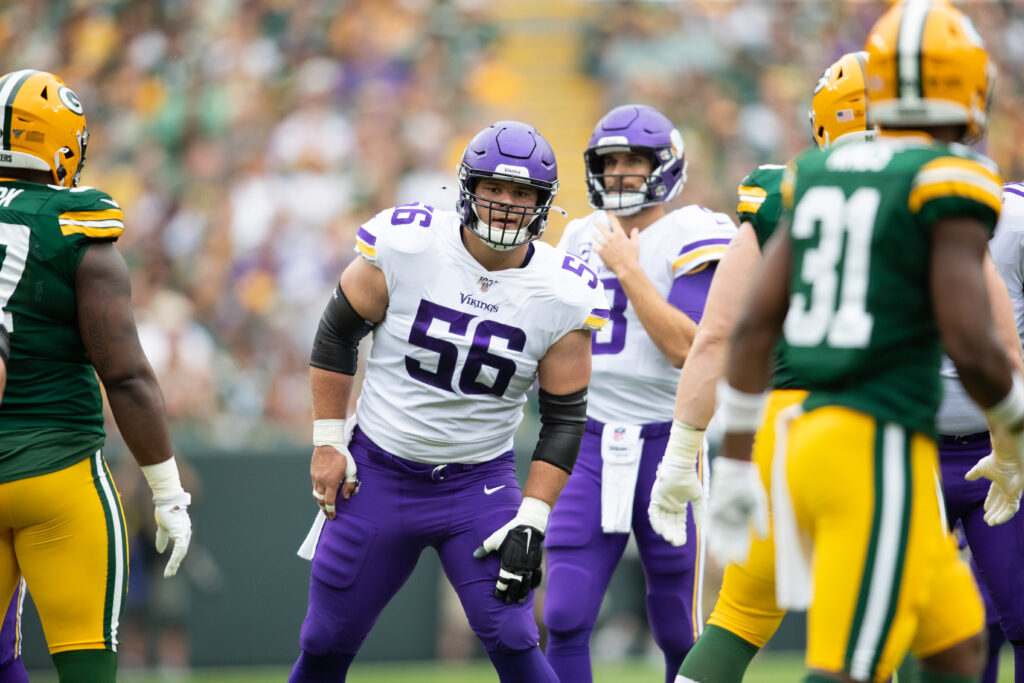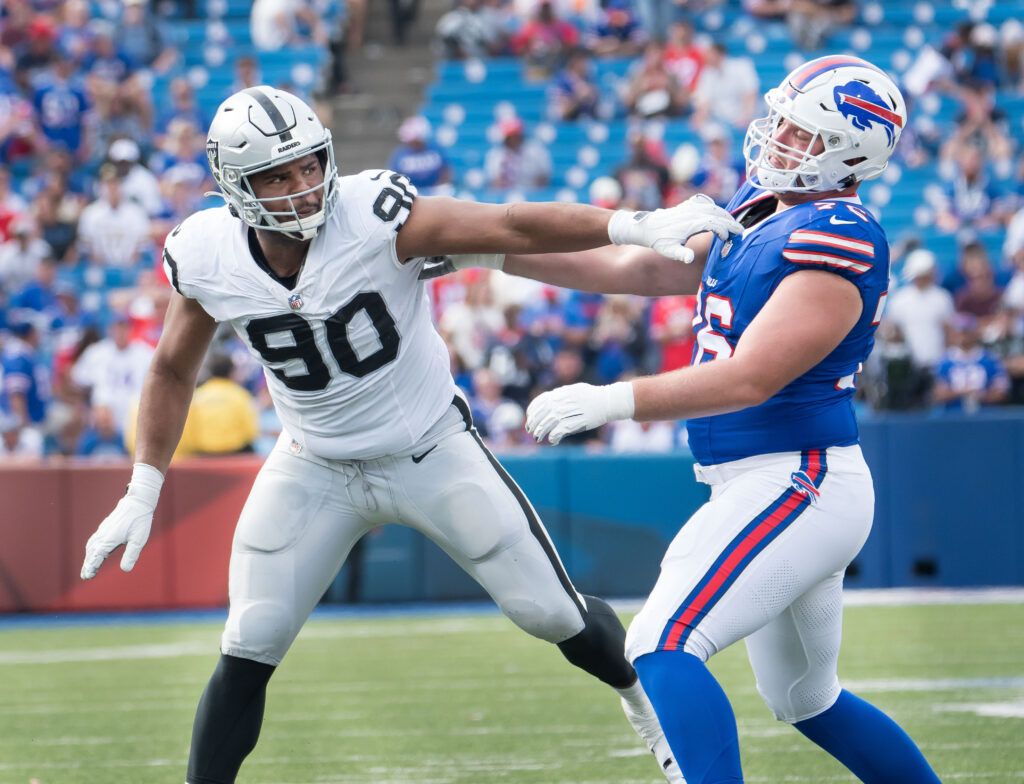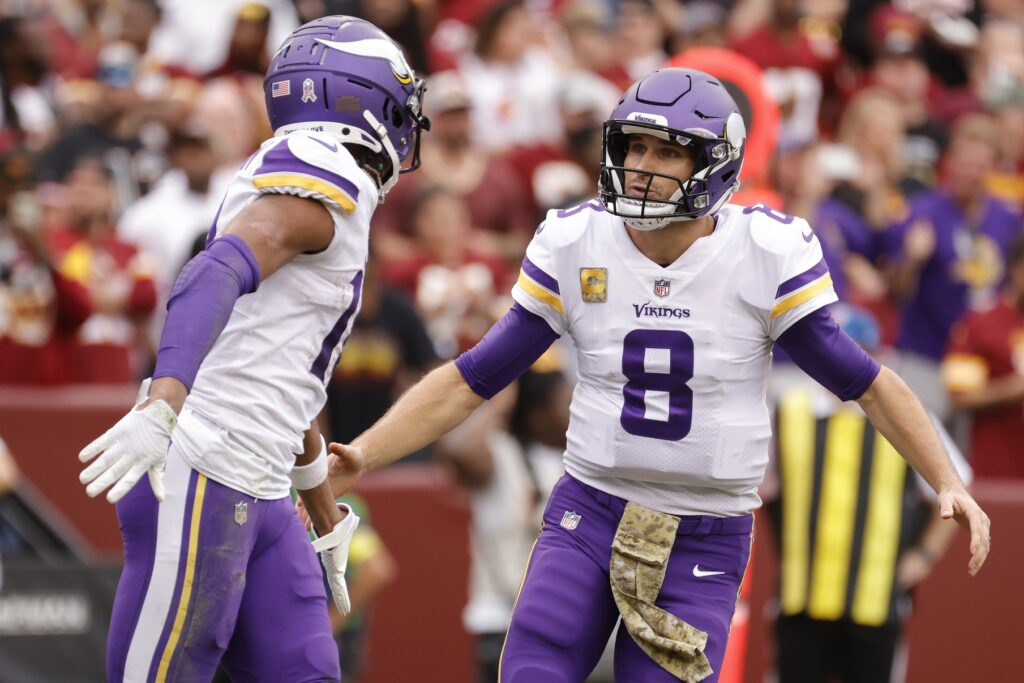
Matthew Coller is an experienced football writer who covered the Vikings for 1500ESPN and Skor North for four years. He is now writing a weekly Vikings column for Bring Me The News, and you can find more of his work at Purple Insider.
Garrett Bradbury’s rookie year saw some pretty big bumps in the road but he was hardly alone.
Of the 12 rookie offensive linemen who played at least 650 snaps last year, only one (New Orleans’s Erik McCoy) was graded by Pro Football Focus in the top 60 (out of 155). Bradbury ranked seventh of the 12 rookies and finished 123rd in overall grade and 152nd as a pass blocker. He gave up the fifth most QB pressures among all centers.
These results aren’t unusual for first-year players. All rookies face a huge jump in competition from college to the NFL but it’s particularly stark on the offensive line. There were 20 interior defensive linemen who registered at least five sacks last season and 25 who averaged at least two QB pressures per game. Defenses, including the Vikings, also deploy situational rushers in passing situations that make the job even tougher.
Add that with the quick transition from the college season to the NFL Combine to the NFL Draft to training camp and there isn’t much time for rookies to prepare for their violent foes. On a Zoom call with the Twin Cities media on Wednesday, Bradbury explained the difference between his 2019 offseason and this year.
“I look back to the calendar year, January and December last year and for the first three or four months, I was preparing for the combine, which isn’t football,” Bradbury said. “So I was practicing 40 starts versus now I’m practicing pass sets and run blocking. I’m practicing 225 bench, whereas now I’m practicing football-specific movements that [the Vikings’ strength coach] has put together… You have so many more questions answered and you know what you need to work on, you can just attack it.”
If the Vikings are going to improve offensively in 2020, they will need Bradbury to follow the same improvement steps of 2018 second-round pick tackle Brian O’Neill, who increased his PFF grade from 63.0 (out of 100 )in his rookie year and allowed pressure rate of 5.8% to a 70.8 grade and 3.7% pressure rate.
Even with O’Neill’s strong play in 2019, Kirk Cousins was still under duress as much last year as he was in 2018. In his first season as a Viking, Cousins was pressured on 38.9% of drop backs, fifth most in the NFL. Last year he was pressured on 36.4% of drop backs, eighth highest. That’s not the type of pass protection that a QB who hangs onto the ball the longest per attempt needs.
The difference between Cousins under pressure and with a clean pocket demonstrates the impact that better pass protection would have on the Vikings��� offense. In 2019 Cousins produced an 84.9 quarterback rating when pressured and 118.1 rating when kept clean. Even a small improvement to his pressure rate would push the Vikings into another tier of offensive passing efficiency. Overall they finished ninth in Pro-Football Reference’s “Expected Points Added” stat, which compares production to game situation. The Super Bowl teams ranked first and fourth.
The pressure is on Bradbury to lead the charge because there is still uncertainty on the interior of the offensive line.
Earlier this offseason the Vikings cut veteran Josh Kline and did not sign a veteran to take his place, leaving them with an open competition between Pat Elflein, 2019 draft pick Dru Samia, rookie Kyle Hinton and Aviante Collins. They could also include second-round pick Ezra Cleveland in the mix or move veteran left tackle Riley Reiff to guard.
It’s going to be up to Bradbury to hold the middle together in a division that features beastly tandems of Green Bay’s Kenny Clark and Za’Darius Smith and Chicago’s Eddie Goldman and Akiem Hicks. Last year three of Bradbury’s lowest graded games by PFF came against Green Bay and Chicago.
As the quarterback of the O-line, he’ll also have to bring together a potentially brand new middle of the O-line during a bizarre offseason that has been severely impacted by the COVID-19 pandemic.
“Chemistry is everything with offensive line,” Bradbury said. “There’s a lot of communication involved and when there’s chemistry you can have that non-verbal communication where you guys know what’s happening, you know the system.”
Even if there are bumps in the road again at guard, Bradbury has the talent to raise the floor of the Vikings’ offensive line. Per the website Relative Athletic Scores, which combines height-weight with NFL Combine performance, Bradbury ranks as the eighth most athletic center to ever participate in the Combine. Coming out in the draft, NFL.com compared him to $47 million center Weston Richburg. Others likened him to the NFL’s best center, Philadelphia’s Jason Kelce.
Despite his struggles in his debut season, the Viking’s top draft pick in 2019 did show flashes of excellence. He gave up zero pressures in games against Philadelphia, Dallas, Denver, Los Angeles and in the Wild Card playoff victory over New Orleans.
“Consistency is kind of the biggest thing for me,” Bradbury said. “It’s such a long season, so you watch a few stretches where you have a few good games and you kind of don’t have such a good game, and so with all this time you’re able to reflect on what was I doing, what was I not doing that was kind of prohibiting me from having the consistency?”
Bradbury said he has been in Minnesota working out at Adam Thielen’s gym this offseason while spending a few days a week going through individual drills on the field. He said the lack of OTAs and minicamp has given him an opportunity to get stronger — to prepare better for the Clarks and Goldmans of the division.
“I’ve been working out, grinding, so I feel as good as I’ve ever felt strength-wise, conditioning-wise, so it’s actually been really good for me individually,” he said.
The Vikings certainly hope that the all-important sophomore offseason helps Bradbury because the fate of their offensive line likely rests on his shoulders.










